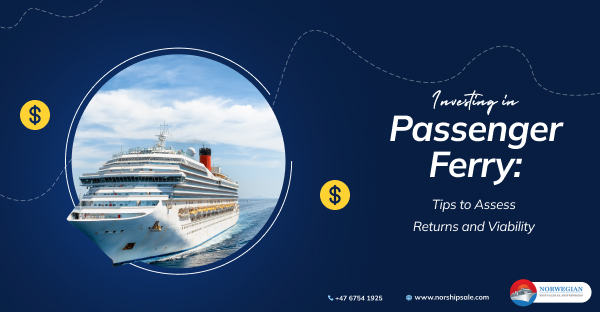Investing in passenger ferries for sale offers the promise of lucrative returns and an exciting adventure in the maritime industry. However, evaluating financial viability and assessing ROI requires careful planning. In this blog, we provide invaluable insights to help investors make informed decisions and set sail towards success by examining the intricacies of profitability on passenger ferries.
Expert Insights Into Calculating ROI and Financial Viability of Passenger Ferries
Understanding the Initial Investment
When investing in passenger ferries for sale, you have to acknowledge that there are usually significant upfront costs. These include buying the boat itself, customizing or retrofitting it to fit your needs and any taxes and fees connected with ownership. There might also be expenses tied up with getting permits and licences and following regulations. Investors need to conduct thorough research and obtain detailed cost estimates so that they can properly evaluate the initial investment required.
Revenue Streams
When assessing the financial potential of a passenger ferry investment, it is important to find and examine possible income sources. They might be:
- Ticket Sales: Total income from passenger fares, which may differ due to factors such as travel distance, passenger demand, and pricing strategies.
- Charter Services: Opportunities to generate additional income from special events, private tours, or corporate functions by chartering the ferry.
- Onboard Services and Amenities: This refers to the money made from selling items on board, such as food and drinks, as well as other ancillary services offered to passengers.
Operating Expenses
Besides revenue potential, investors also need to assess the ongoing expenses linked with acquiring and operating passenger ferries. These expenditures may consist of;
- Fuel and Maintenance Costs: Expenses connected to fuel consumption, regular maintenance, fixing damages, and keeping the vessel in a sound condition for safe and reliable operation.
- Crew Salaries and Benefits: Money spent on hiring and keeping skilled crew members, such as their salaries, training, insurance coverage, and other benefits.
- Port Fees and Infrastructure Costs: These are charges for using the port’s services, like docking, berthing, and terminal facilities. It also includes any investments needed to enhance or renovate infrastructure.
- Regulation Compliance and Insurance: Costs of meeting regulations, obtaining insurance coverage, and maintaining necessary certifications and licences.
- Marketing and Administration: This category includes costs associated with marketing and promotional activities, administrative overhead, as well as general business operations.
Calculating ROI
After the investors comprehend the initial investment, revenue potential, and running costs properly, they can compute the ROI for their passenger ferry for sale investment. Usually represented as a percentage, ROI is the relationship between net profit and initial investment, considering both income earned and expenses spent during a certain time duration.
Assessing Financial Viability
Besides ROI, it is important to evaluate the financial viability of investing in passenger ferries for investors. This can be done by contemplating these aspects:
- Market Demand: Studying the demand of passengers and market tendencies to understand how much profit and expansion can be achieved in the ferry service field.
- Competition View: Knowing the competition and finding chances to make the ferry service special or gain from markets that are not well-served.
- Risk Management: Identifying risks and planning measures to lessen operational, financial, and regulatory risks linked with ferry operations.
- Long-Term Sustainability: Think about the investment’s long-term sustainability, which involves elements like its impact on the environment, technological advancements, and changing market dynamics.
Conclusion
For people who want to invest in the maritime transportation industry, passenger ferries for sale can provide good chances. But doing well here needs careful planning and a complete study of financial details, including how much money it will make and how much it costs to operate. By calculating ROI, checking income potential, costs of operation, and overall financial feasibility, investors can wisely decide on their moves in this market for passenger ferries for sale to increase their success possibilities.


